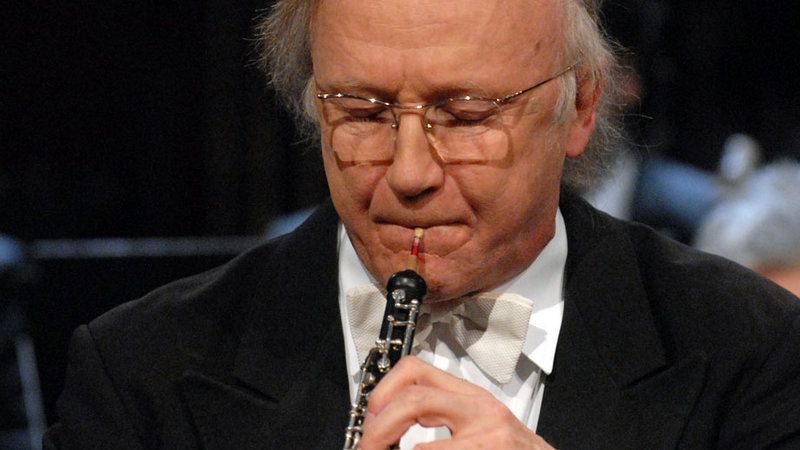Oboist of the month of October: Heinz Holliger.
This month our recognition goes to a renowned and prestigious teacher: Heinz Holliger. An oboist greatly admired by the entire Medina Reeds team. We leave you a little more of his inspiring career.
Heinz Holliger (b. 1939) is considered one of the world’s leading oboe virtuosos, as well as a noted composer and conductor. He began playing recorder at age 4 nd piano at 6. Eventually he switched to oboe, studying with Cassagnaud and Veress at the Berne Conservatory. In 1959 he won a first prize for oboe in the Geneva Competition, and in the same year was hired as an oboist by the Basel Symphony Orchestra. His career as an international oboe virtuoso began in 1963. His tours included solo appearances, performances with his wife, the harpist Ursula Holliger, and chamber music appearances with the Holliger Ensemble, a chamber group he founded. He was appointed professor of oboe at the Staatliche Musikhochschule of Freiburg in 1965.
He quickly became known as the outstanding oboist of the time. He has a deep understanding for the performance practices of all eras of music, and has garnered particular praise for his mastery of the many extended techniques related to the performance of twentieth century music. He is credited with having extended the technical range of the instrument more than any other oboist.
He is very alert to the need for expanding the repertoire of the instrument. He has been critical of oboists for not commissioning challenging new works. He has commissioned works from Berio, Stockhausen, Penderecki, Frank Martin, Pousseur, Henze, Krenek, Jolivet, and Lutoslawski. The Lutoslawski work, the Double Concerto for oboe, harp, and chamber orchestra, written for Holliger and his wife, is considered a masterpiece of 20th century literature.
Holliger began composing when he was young, and has compiled an extensive catalogue in many genres. His music is thoroughly influenced by Schoenberg, Webern and Luigi Nono. Holliger composed The Magical Dances for two dancers, chorus, orchestra, and tape, a work of exceptional aural density and fine nuances. He has also used Indian rhythms to represent specific poetic imagery. In Pneuma (1970) for thirty-six winds, four radios, organ, and percussion, he requires the performers to make specific breathing sounds into microphones, and Cardiophonie uses an amplified stethoscope attached to a solo wind player to add the players pulse to the music. Usually Holliger’s music has a very tight internal logic caused by the strict use of serial procedures, and his musical textures can range from slow, attenuated wisps of sound to combinations of instrumental sound so thick that they practically become “white noise.” His compositions are almost uniformly technically difficult to perform, and highly challenging to listen to.








What did Holliger think of improvisation? He played free improvisation with Globokar in the 1960s but left it behind. Do we know why?